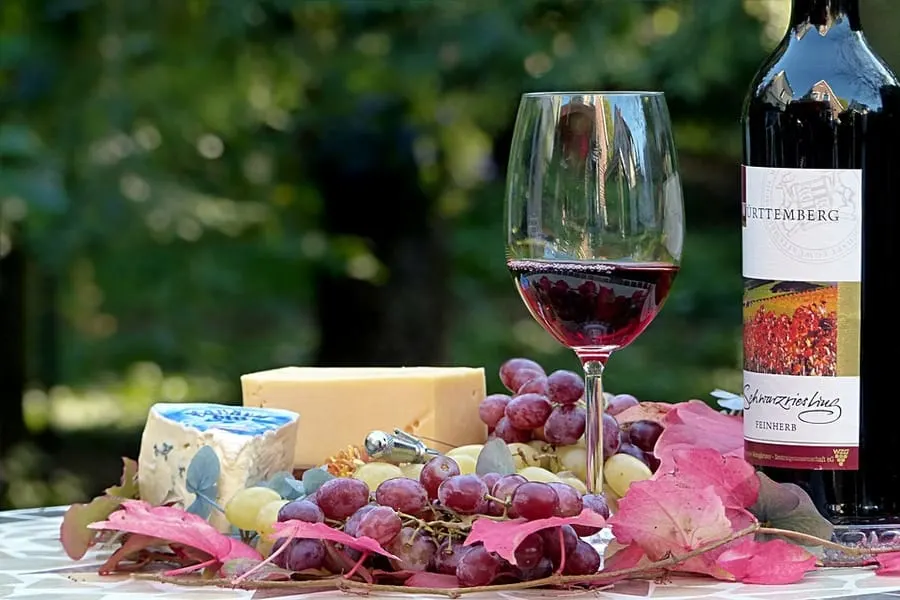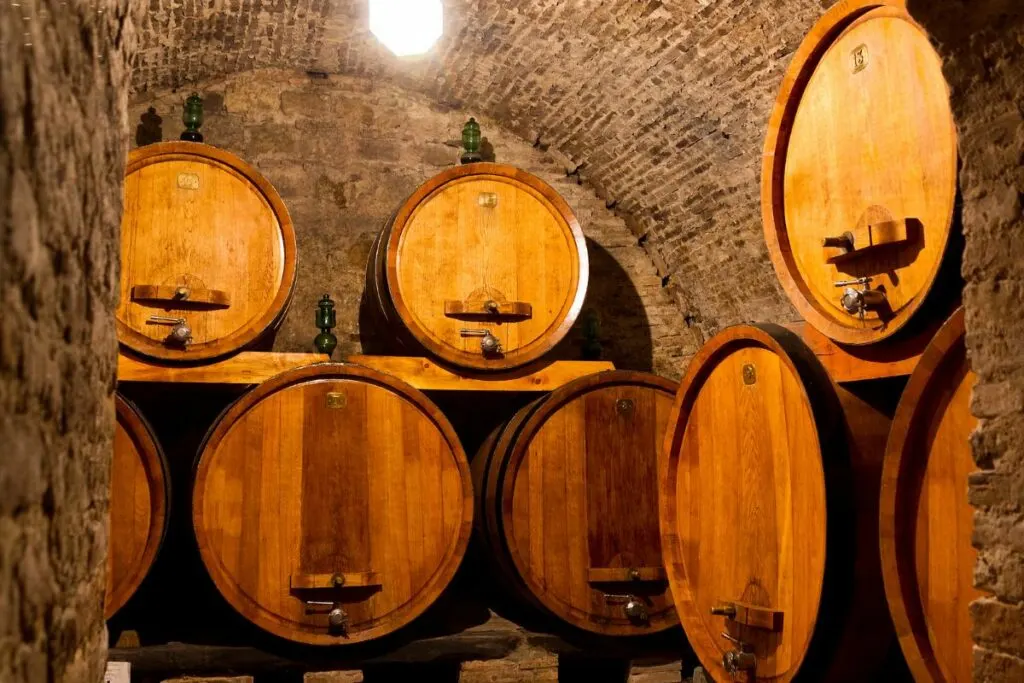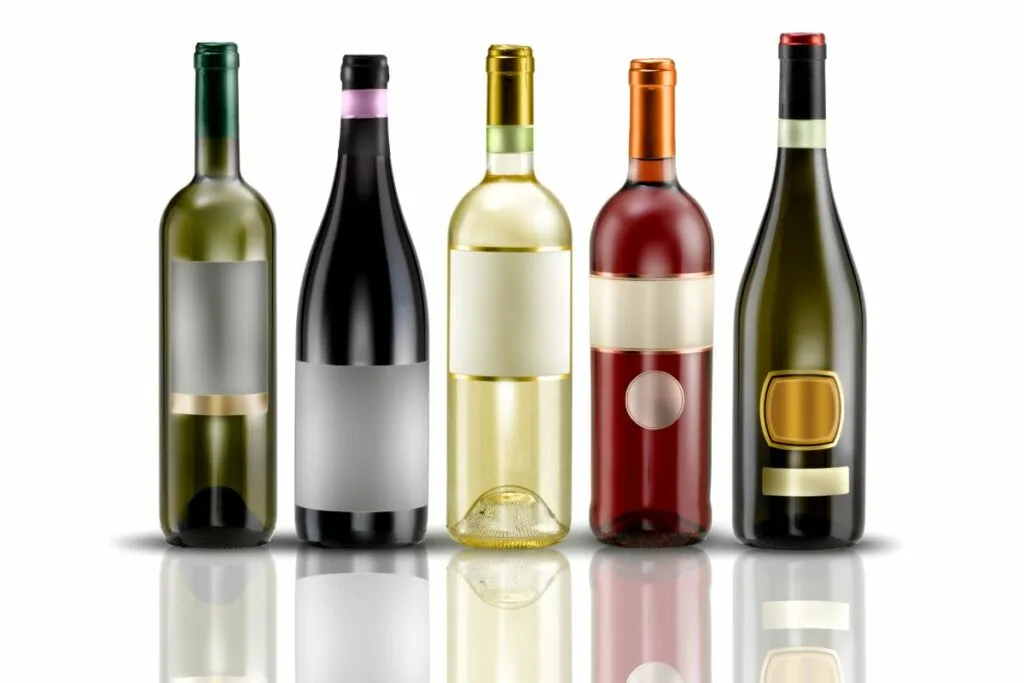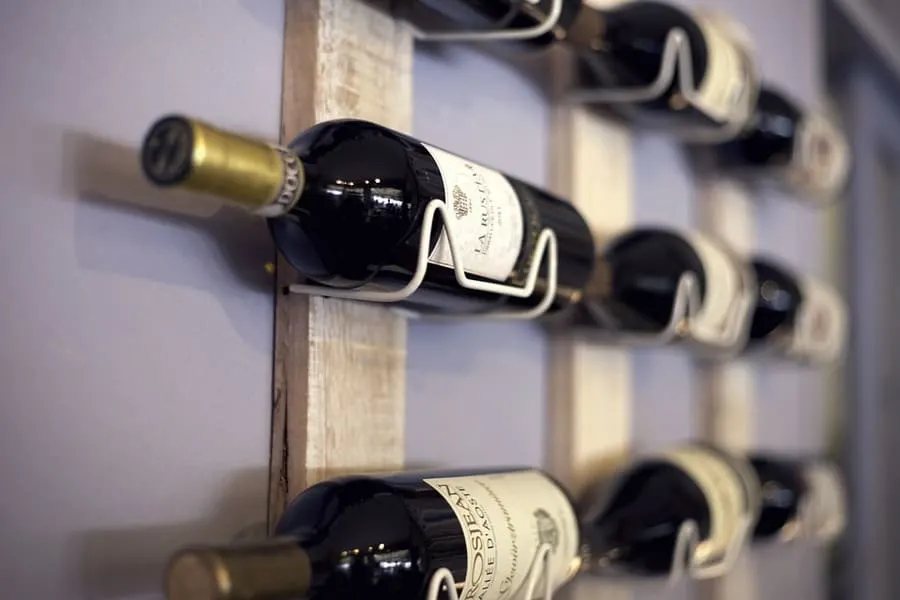As an Amazon Associate, I earn from qualifying purchases with no additional costs for you.
Is it possible to get into aging wine without spending a lot of money, and is it worthwhile to age cheap wine? In this article, we will discuss all the factors that influence how well a wine will age and whether it makes sense to age cheap wine.
Can you effectively age cheap wine to make it taste better? Cheap wine is not suited for aging as a wine’s capacity to age is directly correlated with its quality level. While it is possible to find some wines that are inexpensive and high-quality, generally a higher-priced wine indicates a great potential to age. Most wines on the market have a shelf life of about three to five years. And the lowest tier wines often have an even shorter shelf life.
Before we dive into the more technical aspects of whether you should age cheap wine, I think it is important to evaluate your goals regarding cellaring wine. Aging wine for investment purposes is very different from aging for personal use. If you are interested in buying wine as an investment to age and sell later, your cellar should be focused on more expensive “cult” wines that have a history of high demand and low production.

TIP: If you want to check out the best refrigerator for wine storage, I recommend trying out the Avation (18 bottles) compressor refrigerator with Wi-fi smart app control cooling system. You can find this refrigerator by clicking here (Amazon link).
Recommendation box: Everything you need to enjoy your wine as much as possible. All recommended products are personally tested and regularly used by experts from this website (Amazon links):
> Ivation Wine Cooler – Energy-efficient wine cooler for 18 bottles with Wi-fi smart app control cooling system.
> Wine Rack – Beautiful, elegant wood rack for up to 7 bottles and the choice of vertical or horizontal storage.
> Durand Wine Opener – Classic vintage wine opener (we like all these classic staff).
> YouYah Iceberg Wine Decanter – The most beautiful and handy wine decanter we personally use.
> Bormioli Rocco Wine Glasses – A set of eight elegant and traditional wine glasses made in Italy.
> Vintorio Wine Aerator – Simple but really useful wine aerator for a reasonable price.
> The Original Vacu Vin Wine Saver – The best wine saver on the market in a package with two vacuum stoppers and two wine servers.
And if you want to become a true connoisseur of wine, we recommend reading the book Wine Folly: The Essential Guide to Wine (Amazon link), where you will find all the information you need about winemaking, wine varieties, flavors, and much more.
Aging Cheap Wine: Is it Viable?
Because wine is a consumable item and rare bottles are being drunk every day, you can bet that a cult wine from an older vintage will rise in value as less and less are available on the market. If your wine cellar is purely for personal use, however, you will have a lot more freedom to play with what kinds of wines you choose to age.
But most of us do not have unlimited cellar space and must be somewhat choosy about which wines deserve a coveted spot in the wine fridge. So which bottles make the cut?
Aging: Cheap Wine from Cheap Fruit
“Cheap” wines are generally synonymous with low-quality wines. This has nothing to do with wine snobbery, but rather the technical processes and physical makeup that differentiate plonk from liquid gold. Cheap wine begins with cheap fruit. Cheap grapes are usually grown on land that enables the highest yield possible.
Keep in mind that good wine is grown where the vines have to struggle for nutrients in order to produce fruit. Counterintuitively, the best grapes are grown on poor soils. On infertile soil, the vines must dig their roots further into the earth, which is where much of the complexity of flavor comes in.
Cheap wine is often grown on overly fertilized and irrigated soil. Fertile soil can produce a huge crop and allow for maximum yield. While higher-end wines often come from older vines, cheap wines are mostly produced from young vines.
Young vines produce a larger yield, which is obviously an asset to a winemaker seeking to make a large quantity of low-quality wine.
More expensive wines come from low-yield crops because when the yield is smaller the flavors are most concentrated in a fewer number of grapes.
Cheap wines often also rely on the use of pesticides, herbicides, and fungicides in the vineyard. There are many shortcuts farmers can and do utilize in the vineyard, which ultimately detracts from its quality and stability in the long haul.
TIP: Is there really a difference between cheap and expensive wines? Read on to find out. These are the 7 factors that make fine wine fine!
Aging: Winemaking Process

Then there’s the winemaking process. Cheap wines often rely upon additives to achieve their desired product. In the U.S., there are more than 60 government-approved additives that winemakers use to change the taste of their wine. Winemakers can add coloring agents, flavor enhancers like oak chips, and can alter the acidity and sugar levels of their wine.
Since cheap wine is more of a science experiment than fermented grape juice to start with, it’s not that surprising to hear that the resulting wine isn’t a very age-worthy product.
Aging wine is somewhat akin to buying clothes. When you buy that trendy shirt for $12, you’re probably aware it will not last you beyond the year.
But the price point allows you to experience a seasonally “relevant” look, toss it, and replace it with the next trendy item when it comes along.
A similar attitude should be directed towards cheap wine. It’s not something that will stand the test of time, and there are probably some pretty cringy details about its production.
Cheap wines are often seasonally appropriate but will not be good beyond that; for instance, Beaujolais Nouveau is a wine released in the same year it was made and is only good to drink within about a month of its release.
Expensive “classic” wines will give you a much better return on investment when it comes to aging wine for the long haul.
Which Calibers of Wine are Best Aged?

Thus far, we’ve been talking about the lowest-tier wines possible. But we know “cheap” is entirely relative and will be different from person to person. Maybe you’re looking to age wines in the $20-30 range.
Are wines in this price category more age-able than dirt cheap supermarket wine? They’re certainly more capable of aging, but for the most part, they’re still not the wines we really want to focus our attention on.
The winemaker producing wine in the $20-30 price tier anticipates the consumer will drink the wine immediately. Nearly all wines are enjoyed within 24 hours of purchase and the winemaker will build the wine around this assumption.
The fruit that reveals greater complexity over time will be reserved for the higher-end bottlings. The winemaker can assume the wine to be aged a little longer than the lower-tier offering.
That being said, the agreeability of wine has a lot to do with the structure of that wine. Tannin and acidity are the primary factors that determine a wine’s capacity to age well. Some inexpensive wines can actually be fairly high-quality and can offer a structure capable of aging.
As an example, Muscadet can be aged for up to 30 years. Muscadet is a very inexpensive (usually $10-$18) white wine from the Loire Valley in France; its ability to age is directly tied to its extremely high acidity.
Acidity stabilizes a wine and allows fresh vibrant flavors in the wine to last longer. Some other white wine varieties age well for the same reason–high acid varieties like Gruner Veltliner, Riesling, and Chardonnay. Most of the time, though, fresh summer whites and roses should be drunk within the season they’re bought.
Red wines that are high in tannin and acidity are good candidates for aging, but again the higher-priced wines will reveal greater complexity down the line. Red wines that have a major capacity to age include Cabernet Sauvignon, Merlot, Syrah, Nebbiolo, and Pinot Noir.
Those varieties often taste better with a bit of aging so they can unveil their true form and soften their intense tannins. For the most part, wines from these varietals should be over $30 if you’re looking to age them long-term.
TIP: Read this article for a complete guide to storing red wine. Learn how to store wine long-term for the best results in this comprehensive guide.
Does Aging Make a Noticeable Difference?

The purpose of aging wine is to allow time to unveil complexities and new flavors in a wine. When you age wine, the fruit flavors retreat slightly and give way to tertiary non-fruit aromas like earth. More often than not, cheap wine solely contains pure fruit flavor and is thus pointless or even detrimental to age.
Aging cheap wine will dull the wine completely and leave no supplemental aromas to make drinking it worthwhile. But aging a higher-tier wine will bring many unexpected and delightful surprises, as new flavors continue to arise over time.
When we refer to wine aging, we are talking about the changes that occur in a wine’s composition post-bottling. Once a wine is bottled, most of the oxygen is blocked out, save for a minuscule amount of air that can enter through the cork over long periods of time.
This allows for the wine to remain stable, but to experience low levels of oxidation. This process changes the make-up of the wine and its flavor profile. The first most initially obvious change that an aged wine undergoes is a change in color.
White wines will turn a dark gold, and later brown color. Red wines will turn a copper, brownish hue with age. Wine geeks often say that a wine that has aged has “softened.” By this, they mean the tannins (the compounds that dry out your tongue) have mellowed out and become less aggressive.
There is a scientific process behind this softening effect. Tannins are phenolic compounds. As wine ages, the tannins bind and form into long polymerized chains that are experienced as less tannic on the palate.
We all know wine is made from grapes. So it shouldn’t be much of a stretch to conceive of wine as a fragile consumable with a set shelf life.
Wine is a very sensitive product with a particular set of needs required in order to maintain quality. Expose wine to excess heat, cold, humidity, dryness, light, or vibration, and your wine will be undrinkable.
TIP: Most wines go bad once you pop the cork within a day or so. But a Coravin Wine Preservation system (available for a great price on Amazon) can extend the life of your opened wine for weeks or even months. It is awesome. You should check it out to see if it fits your lifestyle.
Best Way to Age Cheap Wine
If you insist on aging wine under $25, what is the best way to do so? As with any wine, you must be very careful with how you store the wine in order to maintain its quality.
Keep your wine in a cool, dark place that isn’t prone to movement or vibration. Stability is key. Any temperature or humidity swings can damage your wine.
Light is another major killer of wine. Avoid storing your wine in areas that are exposed to sunlight or fluorescent lighting. Another factor to keep in mind is the packaging.
The color of your bottles will impact the amount of light that is able to penetrate through to the wine. The dark green bottles found on most red wines allow for a decent amount of protection against light.
The clear bottles often used for whites and roses, however, offer no protection against incoming light. Those bottles will turn quickly if exposed to light and should be kept in a protected dark area.
TIP: To learn how light affects wine and what you can do to protect it, check out this helpful guide. To find out if buying your favorite wine at the vineyard is cheaper read this article.
Additionally, the closure of the bottle will affect a wine’s capacity to age. Wines with corks are far more ageable than wines with screw caps. Corks allow for a micro amount of oxygen to enter the wine over a long course of time, which is what allows the wine to age. Screw caps are designed to keep oxygen 100% out of the wine.
By the way, screw caps are actually more expensive than corks, so don’t presume a screw cap is an indication of poor-quality wine. Screw caps merely imply that the given wine is designed to be consumed young instead of aged.
Some very high-end wines are packaged with a screw cap nowadays. Napa Valley-based wineries PlumpJack and Cade are a few among many of the new wave.
Concluding Thoughts on Aging Cheap Wine
If you’re buying wine under $25, it’s probably intended to drink right away. Those wines are perfectly delicious, but some wines are designed to drink young and are best that way. This brings us to an important point. We should not make quality assessments about aging wines.
Aging wine is mostly a matter of personal preference. Do you prefer your wines bright and fruity, full of life? Drink your wine young. Or would you rather sacrifice fruit vibrancy for greater depth in its tertiary aromas? Aged wine is the way to go.
Most wine lovers will drink a mix of both, and understand that both have a time and place. Watching wine age is real glory, however, and it is one of the most fun aspects of drinking wine. But of course, there’s also no time like the present to pop a bottle and enjoy it with friends.
TIP: Check out this page for a complete list of wine products and accessories I love. You’ll find my recommendations for wine refrigerators, decanters, and aerators and the best place to buy wine online. Click here to see the complete listing.
